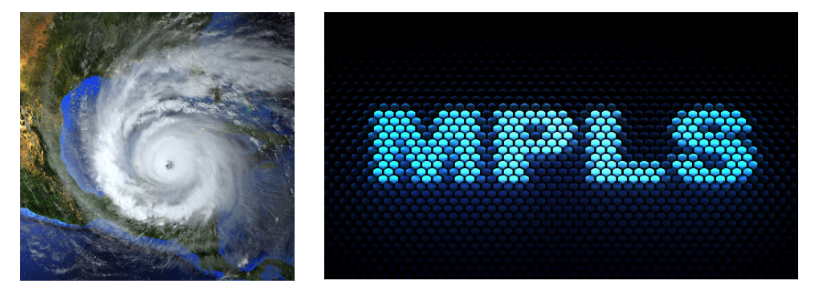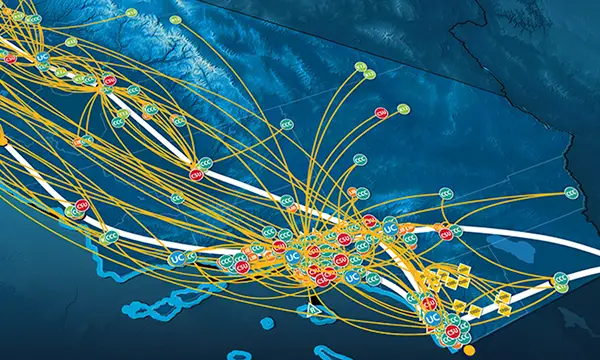- About
- Network
- Community
- Initiatives
- News
- Events
- Blog
- Publications

Boosted by MPLS, NGI Delivers Results
Categories RENS & NRENS Technology & Innovation
As CENIC continues the march forward in its upgrade of the CalREN backbone, an important feature of this work has been the migration of member and Associates’ services to Multi-Protocol Label Switching or MPLS with segment routing. Already, CENIC’s engineering teams are closing in on migrating 50 percent of members to MPLS, an exciting achievement that enables a range of new features.
This migration allows for a series of elegant new MPLS-enabled services to be built on top of the newly upgraded infrastructure.
For example, when the Sierra County Office of Education wanted to consolidate its services with those of its Loyalton High School location behind a single firewall, CENIC was able to offer an E-LINE, connecting those two sites over existing circuits and providing solid service and resiliency. This feature was particularly important where geographic terrain made it challenging to travel between sites for support or to obtain circuits.
MPLS-based services also provided a boost to the San Joaquin Valley Library System, which was seeking to migrate from its legacy hub and spoke solution to MPLS E-LAN. That migration, with E-LAN, simplified the configuration of connections of the seven libraries in that system while enhancing throughput and resiliency as well.
“So far, a large number of the UC campuses, including Berkeley, Merced, Davis, and UCSF, as well as most of the independent college members, have migrated to MPLS,” said Robert Kwon, Associate Vice President of Engineering. “The services we can now offer these campuses are a big benefit to our members.”

This work is making the entire network infrastructure more scalable, more resilient, and more secure. In fact, the MPLS migration adds resiliency to the DDos Mitigation Services offered by CENIC. This solution works to clean CENIC’s traffic by Internet2’s Radware DDoS scrubbing infrastructure.
The migration to MPLS has enabled CENIC’s network to reduce its carbon footprint significantly. When combined with the overall Next Generation Infrastructure effort, CENIC has reduced its power consumption alone by 70 percent, or by 237,000 Kilowatt-hours. The effort has canceled 25 racks and 2300 amps of power, representing important savings for the network.
In addition to CENIC Associates, members like the National Oceanic and Atmospheric Administration see the benefit of MPLS.
"N-Wave leverages MPLS for its nationwide network infrastructure and is looking forward to taking full advantage of the opportunities it will afford to optimize our sites throughout California,” said Robert Sears, Director of N-Wave in the NOAA Office of the Chief Information Officer. “Efficient upgrades and reliable resources are key to N-Wave's ability to provide high-quality services to its federal agency customers, and we applaud CENIC for its forward vision on this front.”
Related blog posts
The Big Game Is Big Data: How CENIC and the California Research and Education Network Support Member Athletics
When Fresno State needed to connect to Pac-12 Enterprises to broadcast a live football game over CBS, the Chancellor's Office reached out to CENIC for what Pac-12 later called the smoothest turn-up they've ever experienced.
Enabling Network-Based Collaboration Around the World: A Tour of CENIC and Partner Network Maps
On the Network Maps page at the CENIC website, you’ll find maps of all the networks, peering facilities, and exchanges to which CalREN connects, showing how thousands of CENIC member institutions connect to CalREN and to colleagues all over the globe.


